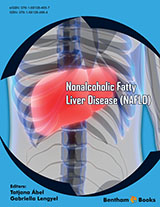Abstract
Non-alcoholic fatty liver disease (NAFLD) and its more severe form, nonalcoholic steatohepatitis (NASH) are common causes of chronic liver disease and major components of the metabolic syndrome. NASH is characterized by the presence of steatosis with necro-inflammation and fibrosis, progressing to cirrhosis and hepatocellular carcinoma. The pathogenesis of NAFLD and NASH originally was regarded as “two-hit” model, suggesting that the accumulation of fat in the liver cells (steatosis) as the first sensitizes the liver to a second hit that triggers a cascade of tissue damages (necro-inflammation and fibrosis). Today, it is widely accepted, that a more complex process, involving multiple parallel metabolic hits is responsible for tissue injury, and that other factors promote disease progression. Thus, now, lipotoxicity, mitochondrial dysfunction, insulin resistance and oxidative stress are considered as the main mechanisms in the pathogenesis of NASH. Reactive oxygen species (ROS), lipid peroxidation products and cytokines are involved in the progression, including the migration of resident hepatic pro-fibrogenic cells, which leads to fibrosis. Hepatocyte death, inflammation, and cellular senescence also play a role in the pathogenesis of the disease. The interaction between inflammatory cells including Th17 cells and other cell types such as hepatocytes, stellate cells, hepatic progenitor cells and ductular components is of pivotal importance, as well as the reactivation of developmental morphogenic signaling pathway, the hedgehog.
Keywords: Non-alcoholic fatty liver disease, Non-alcoholic steatohepatitis, Pathogenesis.

















